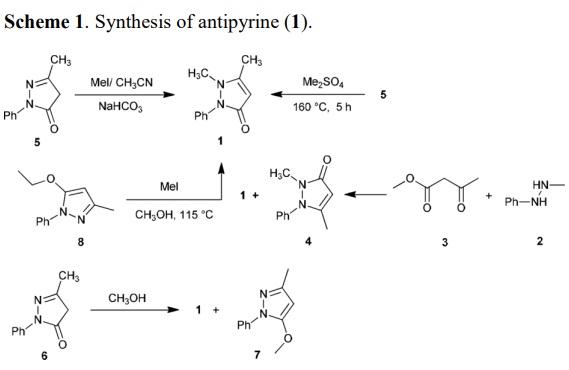Antipyrine Chemische Eigenschaften,Einsatz,Produktion Methoden
ERSCHEINUNGSBILD
FARBLOSE KRISTALLE ODER WEISSES PULVER.
CHEMISCHE GEFAHREN
Zersetzung beim Erhitzen unter Bildung giftiger und ?tzender Stickstoffoxid-Rauche. Reagiert mit Oxidationsmitteln.
ARBEITSPLATZGRENZWERTE
TLV nicht festgelegt (ACGIH 2005).
MAK nicht festgelegt (DFG 2005).
AUFNAHMEWEGE
Aufnahme in den K?rper durch Inhalation des Staubes und durch Verschlucken.
INHALATIONSGEFAHREN
Verdampfung bei 20°C vernachl?ssigbar; eine gesundheitssch?dliche Partikelkonzentration in der Luft kann jedoch beim Dispergieren schnell erreicht werden, vor allem als Pulver.
WIRKUNGEN BEI KURZZEITEXPOSITION
WIRKUNGEN BEI KURZZEITEXPOSITION: Die Substanz reizt die Augen und die Atemwege. M?glich sind Auswirkungen auf das Blut mit nachfolgender Meth?moglobinbildung.
LECKAGE
Verschüttetes Material in Beh?ltern sammeln; falls erforderlich durch Anfeuchten Staubentwicklung verhindern. Reste sorgf?ltig sammeln. An sicheren Ort bringen. Pers?nliche Schutzausrüstung: Atemschutzger?t, P2-Filter für sch?dliche Partikel.
R-S?tze Betriebsanweisung:
R22:Gesundheitssch?dlich beim Verschlucken.
R36/37/38:Reizt die Augen, die Atmungsorgane und die Haut.
S-S?tze Betriebsanweisung:
S26:Bei Berührung mit den Augen sofort gründlich mit Wasser abspülen und Arzt konsultieren.
S36:DE: Bei der Arbeit geeignete Schutzkleidung tragen.
S37/39:Bei der Arbeit geeignete Schutzhandschuhe und Schutzbrille/Gesichtsschutz tragen.
Chemische Eigenschaften
Colorless crystal or white crystalline powder. Soluble in benzene, ethanol, water, chloroform, slightly soluble in ether. Odorless, slightly bitter.
History
Antipyrine (phenazone) was one of the first important synthetic Analgesic drugs that synthesis in Germany in 1884 by a pupil of Emil Fischer.
Verwenden
Antipyrine has been used for immunoblotting. It has also been used as an internal reference marker for studying the transport characteristics of platinum-containing drug, cisplatin in the human placenta in vitro. Antipyrine is an analgesic and antipyretic that has been given by mouth and as ear drops. It is often used in testing the effects of other drugs or diseases on drug-metabolizing enzymes in the liver. (From Martindale, The Extra Pharmacopoeia, 30th ed, p29)
Definition
ChEBI: Antipyrine is a pyrazolone derivative that is 1,2-dihydropyrazol-3-one substituted with methyl groups at N-1 and C-5 and with a phenyl group at N-2. It has a role as a non-narcotic analgesic, an antipyretic, a non-steroidal anti-inflammatory drug, a cyclooxygenase 3 inhibitor, a xenobiotic and an environmental contaminant.
synthetische
Antipyrine (1) was prepared from the reaction of 3-methyl-1-phenyl-1H-pyrazol-5(4H)-one with methyl iodide in methanol or in acetonitrile containing sodium bicarbonate in water in 58% yield. The reaction of 1-methyl-2-phenylhydrazine (2) with methyl 3-oxobutanoate (3) in acetonitrile gave 1 and pyrazolone 4 . Krohn has been reported the synthesis of 1 from the reaction of 5 with dimethyl sulfate in 71% yield. The reaction of pyrazolone 6 with methanol in the presence of triphenylphosphine afforded 1 (14%) and pyrazole 7 (53%). The same reaction was reported by Pegurier et al by heating the reactants in methanol containing calcium monoxide. Knorr early reported also, the synthesis of antipyrine from heating of 1-phenyl-5-ethoxy-3- methylpyrazole (8) with methyl iodide in methanol.

Weltgesundheitsorganisation (WHO)
Phenazone is a pyrazolone derivative chemically related to
aminophenazone. Some regulatory authorities have imposed restrictions on its use
on these grounds. However, a recent international study showed no statisticallybased
evidence of an association with agranulocytosis or aplastic anaemia. Nor
does it share with aminophenazone the propensity to produce potentially
carcinogenic nitrosamines.
Allgemeine Beschreibung
Antipyrine is an antipyretic agent used for the symptomatic treatment of acute otitis media, most commonly in combination with benzocaine. One of the earliest widely used analgesics and antipyretics, antipyrine was gradually replaced in common use by other medications including phenacetin (itself later withdrawn because of safety concerns), aspirin, paracetamol and modern NSAIDs such as ibuprofen.
Sicherheitsprofil
A human Doison bv 1 i
an unspecified route. Moderately toxic via
ingestion, subcutaneous, and intravenous
routes. Questionable carcinogen with
experimental tumorigenic data. Mutation
data reported. When heated to
decomposition it emits toxic fumes of NOx.
l?uterung methode
Antipyrine crystallises from EtOH/water mixture, *benzene, *benzene/pet ether or hot water (charcoal), and the crystals are dried under a vacuum. [Beilstein 24 H 27, 24 III/IV 75.]
Antipyrine Upstream-Materialien And Downstream Produkte
Upstream-Materialien
Downstream Produkte

